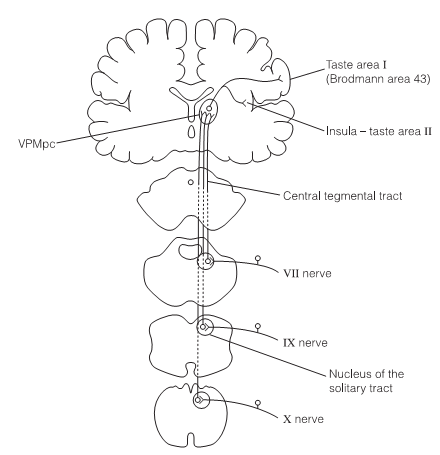Anatomy of taste pathways
The gustatory prime afferents of cranial nerves, VII, IX, and X contain their cell bodies in the geniculate, petrosal, and nodose ganglia correspondingly. Their centrally directed axons end in the rostral part of the nucleus of the solitary tract (NST) that lies in the dorsal medulla as shown in figure below. Taste primary afferents secrete glutamate and substance P.
Few NST cells project to the lateral hypothalamus that organizes autonomic responses to feeding. The other NST gustatory neurons project through the central tegmental tract to the ipsilateral ventral posterior medial nucleus (VPMpc) of the thalamus, finishing on a population of small cells dissimilar from those receiving somatosensory input from the tongue or pharynx. Such cells send their axons to the ipsilateral cortex; unlike most sensory pathways, that for taste is uncrossed. The taste area I for conscious perception of taste is situated in the lateral sulcus adjacent to the somatotopic mapping of the tongue. The taste area II is in the insula and is concerned with the affective aspects of taste.

Figure: Central gustatory pathways. VPMpc, parvocellular portion of the ventral posterior medial nucleus of the thalamus.